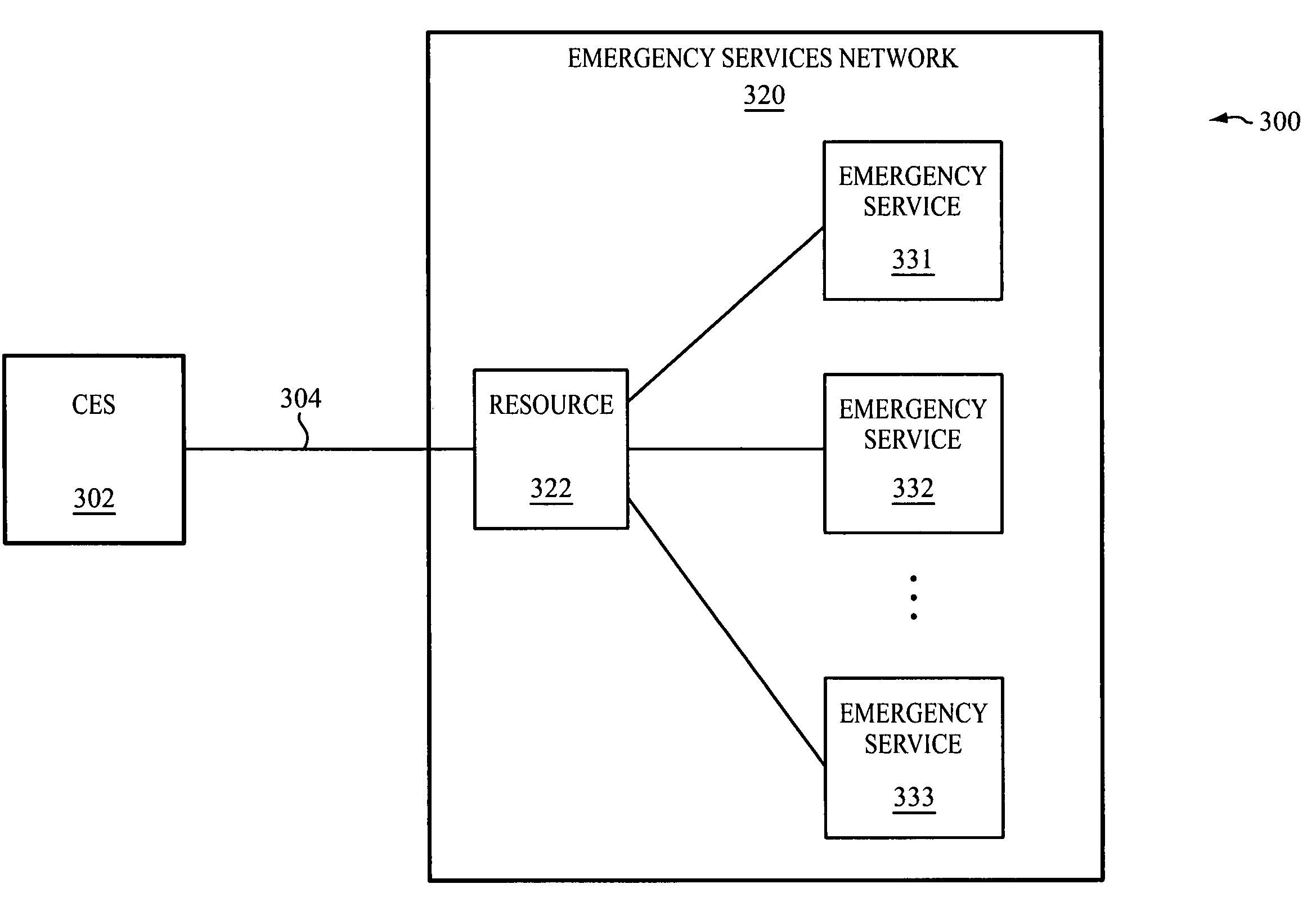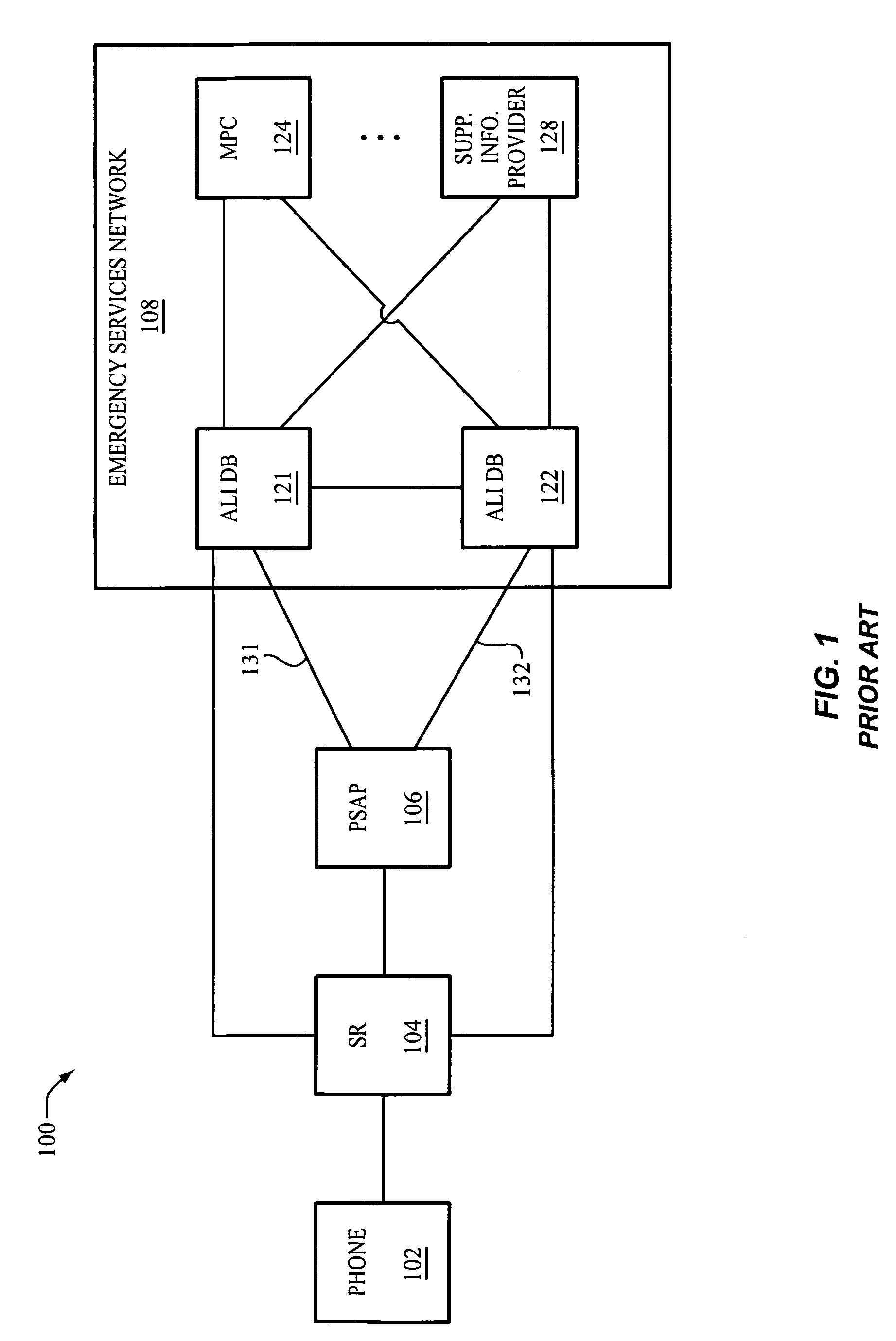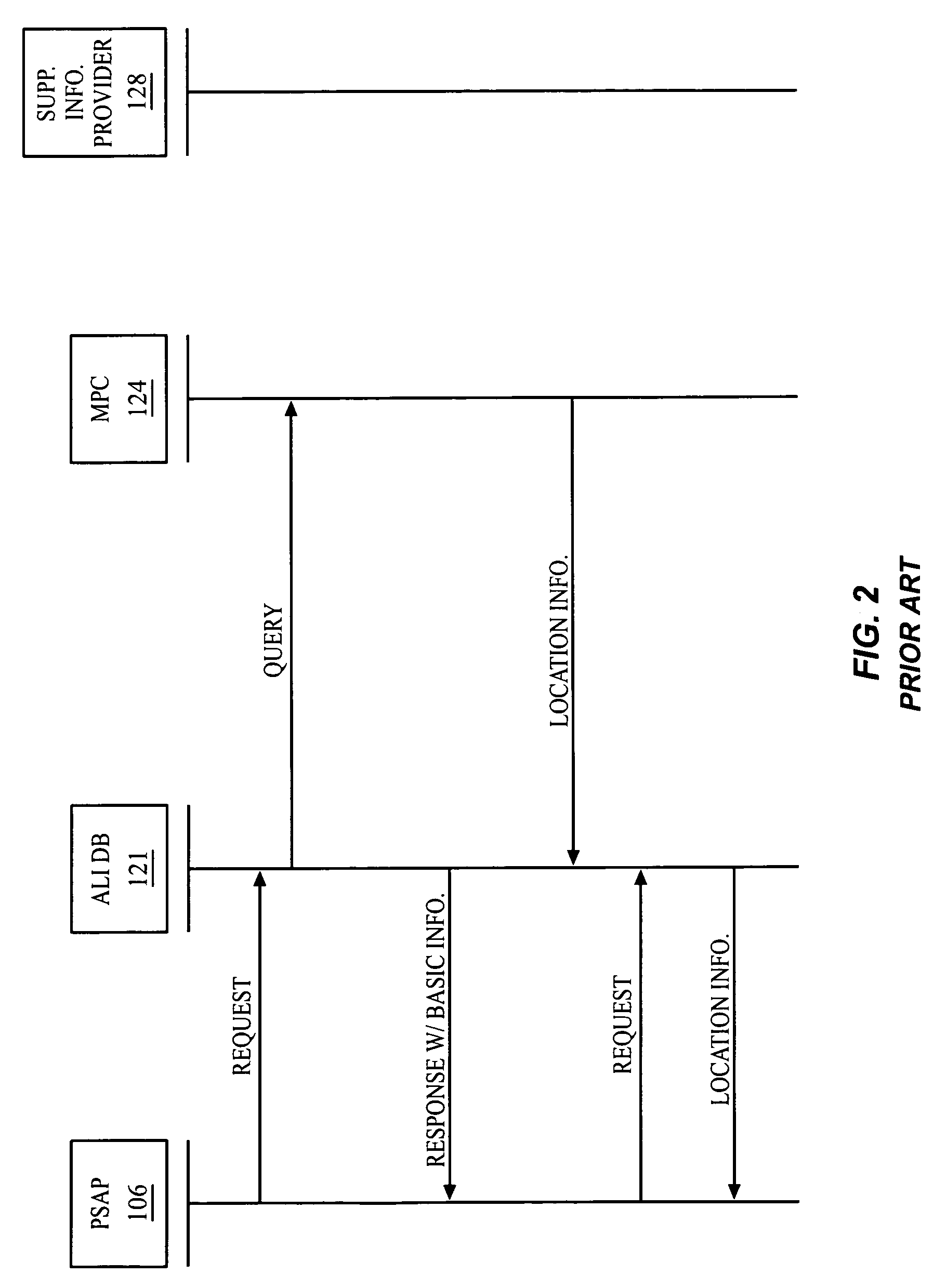Bi-directional messaging for an emergency services network
a technology of emergency services and bi-directional messaging, applied in the field of emergency services, can solve the problems of limited information in the text stream, inability of psap-ali to adequately service emergency calls, and inability to effectively communicate with users, etc., to achieve the effect of improving communication and information delivery, broadening the number of participants, and improving services
- Summary
- Abstract
- Description
- Claims
- Application Information
AI Technical Summary
Benefits of technology
Problems solved by technology
Method used
Image
Examples
Embodiment Construction
Description of the Prior Art
[0020]FIG. 1 illustrates a prior art communication network 100 that provides emergency services. Communication network 100 includes a telephone 102, a selective router (SR) 104, a Public Safety Answering Point (PSAP) 106, and an emergency services network 108. Emergency services network 108 includes two ALI databases 121–122, a Mobile Positioning Center (MPC) 124 (or a Gateway Mobile Location Center (GMLC)), a supplemental information provider 128, and other backend resources (not shown). Although a single MPC 124 and a single supplemental information provider 128 are illustrated in FIG. 1, emergency services network 108 generally includes multiple MPCs and supplemental information providers. As shown in FIG. 1, telephone 102 is connected to selective router 104. Selective router 104 is connected to PSAP 106 and ALI databases 121–122. PSAP 106 is connected to ALI databases 121–122. ALI database 121 is connected to ALI database 122, MPC 124, and supplement...
PUM
 Login to View More
Login to View More Abstract
Description
Claims
Application Information
 Login to View More
Login to View More - R&D
- Intellectual Property
- Life Sciences
- Materials
- Tech Scout
- Unparalleled Data Quality
- Higher Quality Content
- 60% Fewer Hallucinations
Browse by: Latest US Patents, China's latest patents, Technical Efficacy Thesaurus, Application Domain, Technology Topic, Popular Technical Reports.
© 2025 PatSnap. All rights reserved.Legal|Privacy policy|Modern Slavery Act Transparency Statement|Sitemap|About US| Contact US: help@patsnap.com



